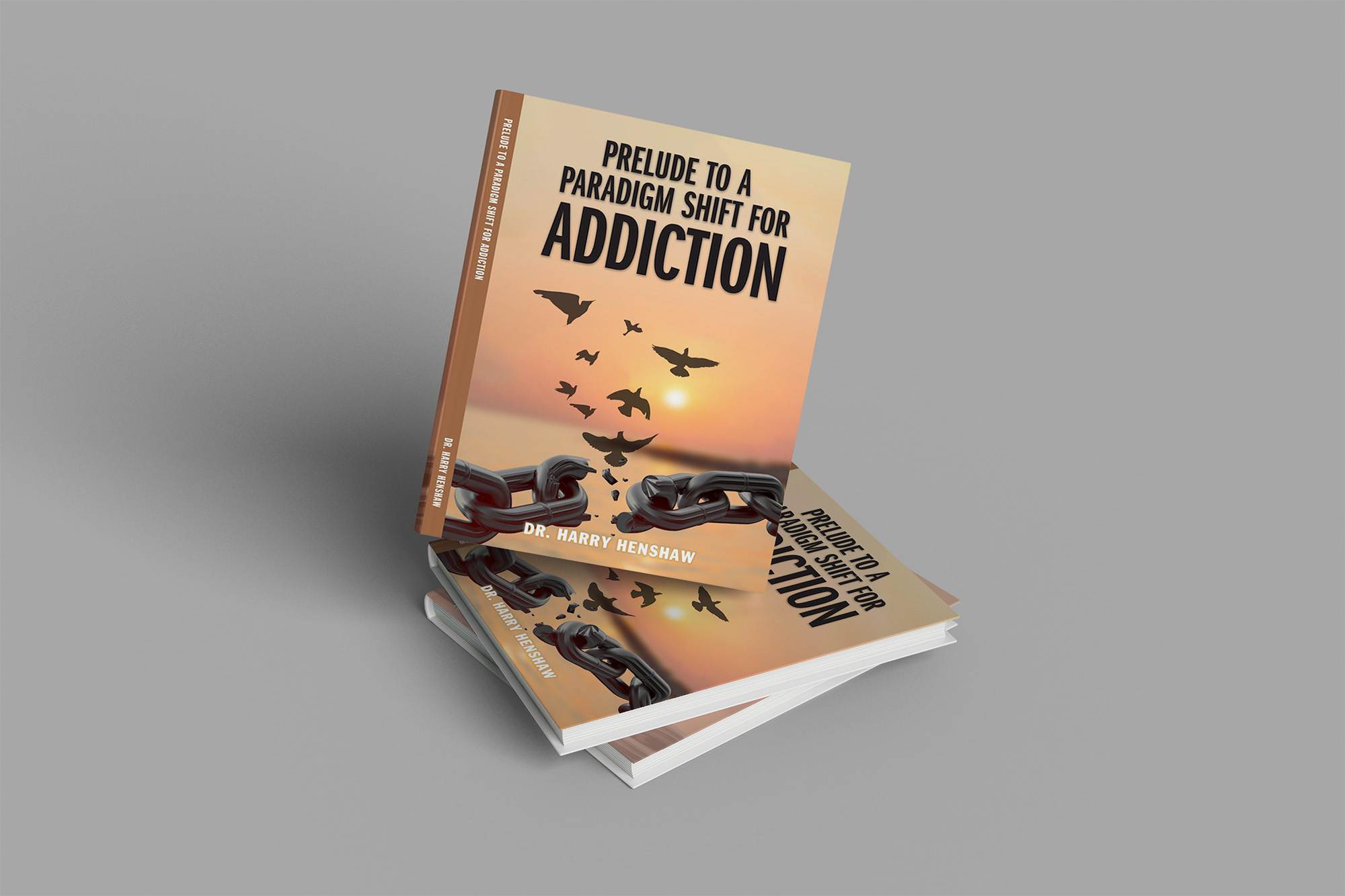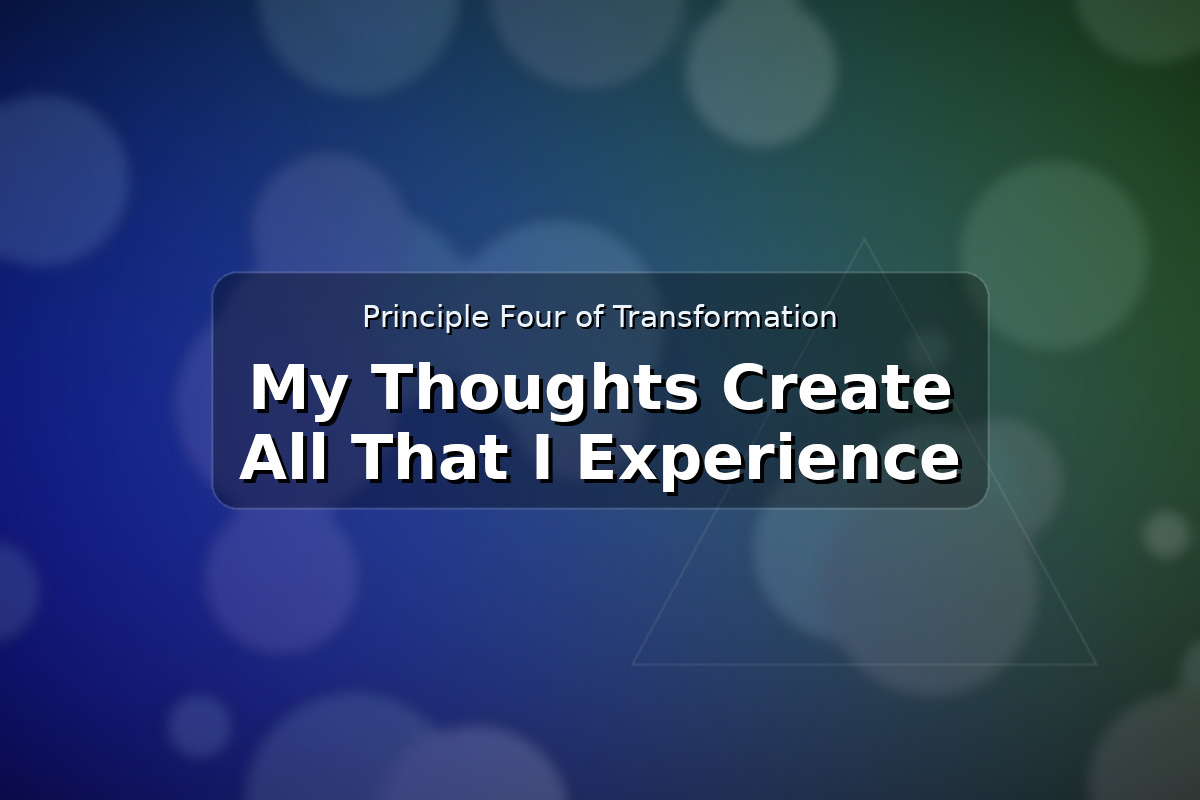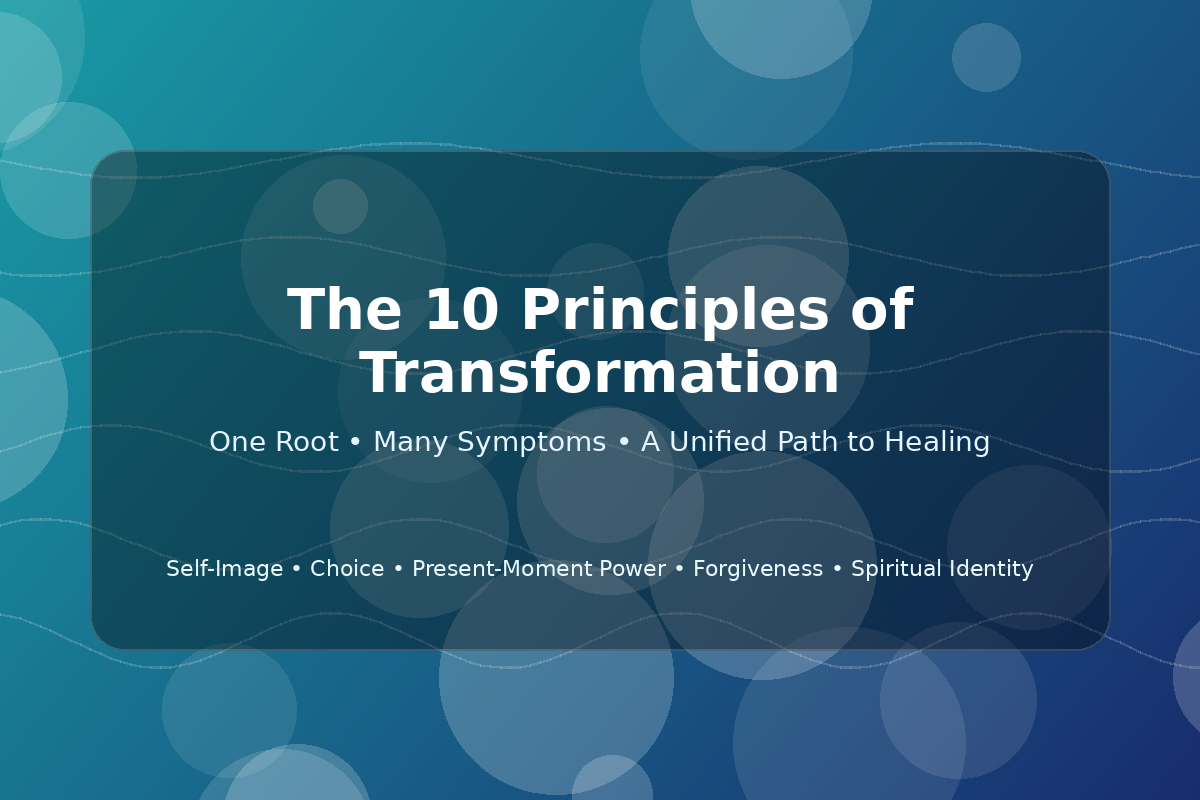Table of Contents
Addiction is widely regarded as one of the most pressing health crises of our time. From government policy and healthcare systems to media narratives and support groups, the dominant belief is that addiction is a chronic brain disease—one triggered by exposure to addictive substances and perpetuated by chemical dependency. While this model has helped destigmatize substance use disorders and promote treatment access, it may also obscure a deeper and more empowering truth.
What if the root of addiction lies not in the substances themselves, or even in the physiology of the brain, but in the mind and heart of the individual? What if addiction is not caused by external forces, but by internal narratives—deep-seated beliefs and thought patterns, particularly those related to self-worth and identity? This article presents a hypothesis for a new paradigm in understanding and treating addiction: one that centers on self-image, personal responsibility, and the transformative power of thought.
Beyond the Disease Model: Rethinking the Nature of Addiction
The prevailing narrative frames addiction as a disease of the brain, characterized by compulsive behavior, loss of control, and lasting changes in brain chemistry. While there is truth in the observation that prolonged substance use affects neurological functioning, this is not the full picture. The disease model often treats the individual as a passive victim of brain chemistry, reducing behavior to biological determinism.
But addiction is not merely a physiological condition—it is a psychological and spiritual crisis. It is rooted in the individual’s relationship with themselves: their beliefs, their thoughts, and especially their self-perception. As recovery literature occasionally suggests, addiction is less about the body and more about the mind. Yet mainstream treatment programs continue to overlook this truth.
The new paradigm begins with a radical but liberating proposition: addiction is not caused by the drug—it is caused by the demand.
The Cause Is the Demand, Not the Supply
Society expends enormous effort and resources trying to limit the supply of addictive substances. We criminalize production, regulate prescriptions, and attempt to restrict access. While these measures have their place, they fail to address the root cause of the problem: the demand for these substances.
Why does demand persist, even in the face of overwhelming consequences? Why do individuals continue to seek substances that destroy their bodies, relationships, and futures?
The answer lies within the individual. The demand for drugs and alcohol is driven not by the availability of these substances but by the internal experience of the person seeking them. People use substances not simply to feel good—but to feel better than they currently do. They are attempting to escape an emotional pain that originates in how they perceive themselves and their worth.
The Root of Addiction: Negative Self-Image
At the core of addictive behavior is a damaged self-image—a deeply held belief that one is unworthy, inadequate, or fundamentally flawed. When individuals see themselves as broken or inferior, they experience emotional pain: shame, despair, anxiety, fear. Substances offer temporary relief from this pain, providing a sense of escape, if only fleeting.
Dr. Maxwell Maltz, in his groundbreaking work Psycho-Cybernetics, emphasized the power of self-image as the “real key to personality and behavior.” He wrote:
“Change the self-image and you change the personality and the behavior.”
This insight is central to the new paradigm. Addiction is not merely about chemical dependency—it is a pattern of thinking, a compulsive attempt to manage the emotional consequences of a negative belief system.
The Power of Thought: Addiction as a Cognitive Issue
Thoughts are not passive or insignificant. They are powerful, creative forces that shape our emotional experience and behavior. Cognitive psychology confirms what many spiritual traditions have long taught: our beliefs about ourselves shape the trajectory of our lives.
As Louise Hay wrote:
“Every thought we think is creating our future. Each one of us creates our experiences through our thoughts and our feelings.”
Addiction, in this view, is not a physical disorder but an ideational one. It is rooted in thought—in how individuals interpret their value, their identity, and their place in the world. Every feeling of inadequacy, every emotional trigger, every compulsion to use stems from a deeper thought: “I am not enough.”
This thought, repeated over time, becomes a belief. That belief becomes a self-image. And that self-image becomes a life.
The Most Important Thought: What You Believe About Yourself
Among the thousands of thoughts we think each day, none are more influential than the ones we have about ourselves. Our beliefs about our worth, our significance, and our right to exist shape every domain of our lives—our health, our relationships, our finances, our choices.
Dr. Maltz wrote:
“You will act like the sort of person you conceive yourself to be… You literally cannot act otherwise.”
When individuals conceive of themselves as failures, victims, or inherently broken, they unconsciously create situations that confirm those beliefs. This is the silent force behind self-sabotage, emotional isolation, and the repeated cycles of addiction.
Until this core belief is transformed, no amount of abstinence, therapy, or external support will produce lasting change.
The Inner Narrative of Addicts and Alcoholics
In my experience as a psychotherapist, I have found that addicts and alcoholics consistently hold negative core beliefs about themselves. Beneath their behaviors, justifications, and defenses lies a single, dominant thought: “I’m not good enough.” This is what Dr. Carl Jung might call the Shadow Belief—the unconscious story that defines our identity and sets the boundaries for our behavior.
This belief shapes expectations, sabotages relationships, and drives the pursuit of emotional anesthesia. Drugs and alcohol become tools for managing the psychic pain of this belief. But the relief is temporary, and the pain eventually returns—stronger, darker, and more entrenched.
Distinguishing Between Self-Image and Self-Esteem
To fully understand the psychological foundation of addiction, it’s important to distinguish between self-image and self-esteem. Self-image is the belief we hold about our inherent value and identity. It is a thought-based concept formed in the mind. Self-esteem, on the other hand, is the emotional result of that belief. It is how we feel in response to our thoughts about ourselves.
Self-image gives rise to self-esteem. A negative self-image generates low self-esteem, producing emotional pain. That pain becomes the trigger for substance use.
Thus, addiction is not random behavior. It is the predictable result of a distorted self-image and the emotional suffering it creates.
Self-Esteem Is a Kinesthetic Experience
Self-esteem is more than just a psychological concept—it is a physical sensation. It is felt in the body as tension, tightness, unease, or emptiness. These sensations are not mysterious—they are the body’s way of responding to the mind’s story.
When individuals believe they are unworthy, the body reacts. It feels pain. And when that pain becomes intolerable, the individual seeks relief. This is where drugs and alcohol come in—not as the problem, but as the attempted solution to the pain of self-rejection.
Louise Hay observed:
“No matter what the problem is, our experiences are just outer effects of inner thoughts.”
Self-Destructive Behavior as a Consequence of Low Self-Worth
A negative self-image doesn’t just make us feel bad—it leads to self-destructive behavior. People who believe they are unworthy act in ways that confirm that belief. They may neglect their health, engage in risky behavior, or sabotage opportunities. In extreme cases, they may flirt with death—not because they want to die, but because they don’t believe they deserve to live.
This is not melodrama. It is the logical extension of a belief system that says, “I am not enough.” Substance use becomes just one of many ways to express self-rejection. If addiction is the symptom, the cause is the belief in one’s own worthlessness.
Avoidance of Emotional Pain Is the Core of Addiction
Contrary to popular belief, addicts are not simply chasing pleasure. They are avoiding pain—specifically, the emotional pain generated by negative self-perception. Depression, fear, anxiety, and shame are the constant companions of the person who sees themselves as inadequate. Substances offer momentary relief from that inner torment.
But the relief is short-lived. Tolerance builds. Emotional pain returns. The cycle repeats—until the individual realizes that no external substance can heal an internal wound.
The Ripple Effect: How Negative Thinking Shapes Every Area of Life
The consequences of a negative self-image are not limited to emotional distress. They spill into every aspect of life. Relationships suffer. Careers falter. Physical health declines. Spiritual connection erodes.
The person who does not love themselves cannot love others. They cannot receive love. They cannot make healthy choices or take meaningful risks. They live in survival mode—reactive, defensive, afraid.
This is why recovery must be more than sobriety. It must be a reconstruction of identity.
The Failure of Current Treatment Models
Most addiction treatment programs focus on managing symptoms. They emphasize abstinence, support groups, and sometimes medication. While these tools can be helpful, they often fail to address the underlying cause: the way the individual thinks about themselves.
Instead, they pathologize behavior without exploring its origin. They treat distorted thinking as a side effect rather than a root cause. This oversight perpetuates the cycle of relapse and reinforces the belief that the addict is powerless.
But what if they are not powerless? What if they are simply misinformed—trapped in a story that isn’t true?
A Hypothesis for a New Model of Recovery
Every revolution begins with a question. Here is mine:
What if addiction is not a disease, but a consequence of thought?
This new paradigm does not deny the challenges of substance use or the neurological impact of addiction. But it proposes that the true origin lies in the mind, in the story the individual tells themselves about who they are.
Change the story, and you change the behavior. Change the belief, and you heal the pain. Change the self-image, and you change the life.
This is not a minor adjustment—it is a complete reimagining of what addiction is and how it can be overcome.
The Good News: Self-Image Can Be Changed
Dr. Maltz wrote:
“One is never too young or too old to change his self-image and thereby start to live a new life.”
This is the hope embedded in the new paradigm. The self-image is not fixed. It is not destiny. It is a thought—and thoughts can be changed.
Through intentional work—therapy, journaling, affirmations, mindfulness, and self-compassion—individuals can dismantle the beliefs that have imprisoned them. They can learn to see themselves not as broken or deficient, but as whole, valuable, and worthy of love.
This is where true recovery begins.
Conclusion: A Call to Empowerment
Addiction is not about substances. It is about the self—how we think, what we believe, and especially how we perceive our own value. If we want to transform addiction treatment, we must stop looking for answers in chemistry or circumstance. We must look within.
The new paradigm is not just a theory—it is a path to empowerment. It says: You are not broken. You are not powerless. You can change your life by changing your mind.
And that journey begins with a single, courageous thought:
“I am enough.”

Get Free from Addiction!
Discover a groundbreaking perspective on addiction recovery. Click below to buy Prelude to a Paradigm Shift for Addiction and explore innovative solutions to transform the way we understand and treat substance use disorders.
About Enhanced Healing
Enhanced Healing Counseling specializes in addiction recovery, mental health, and self-esteem support. Offering online and in-person services, we empower individuals to transform their lives with personalized care and proven therapeutic methods.




